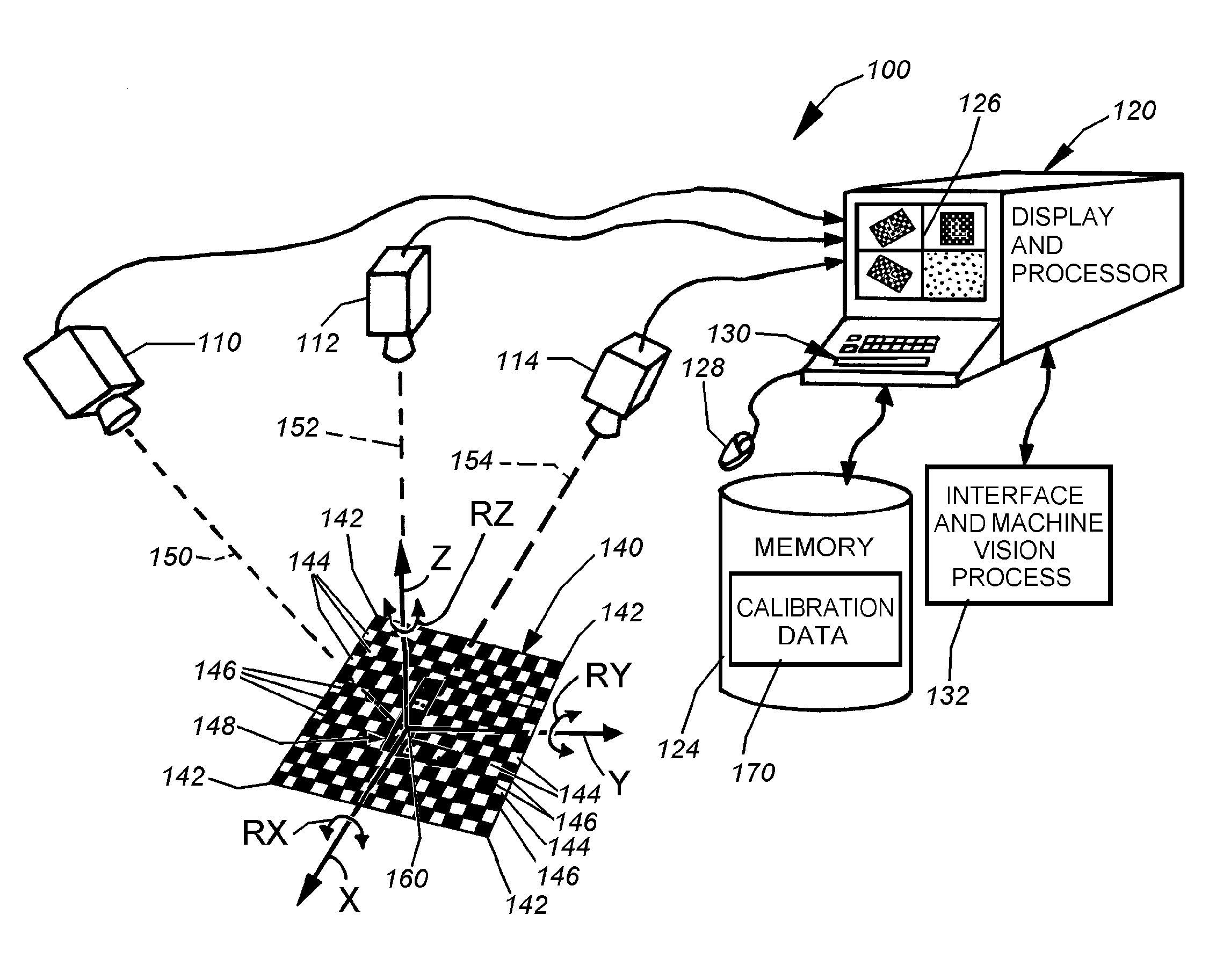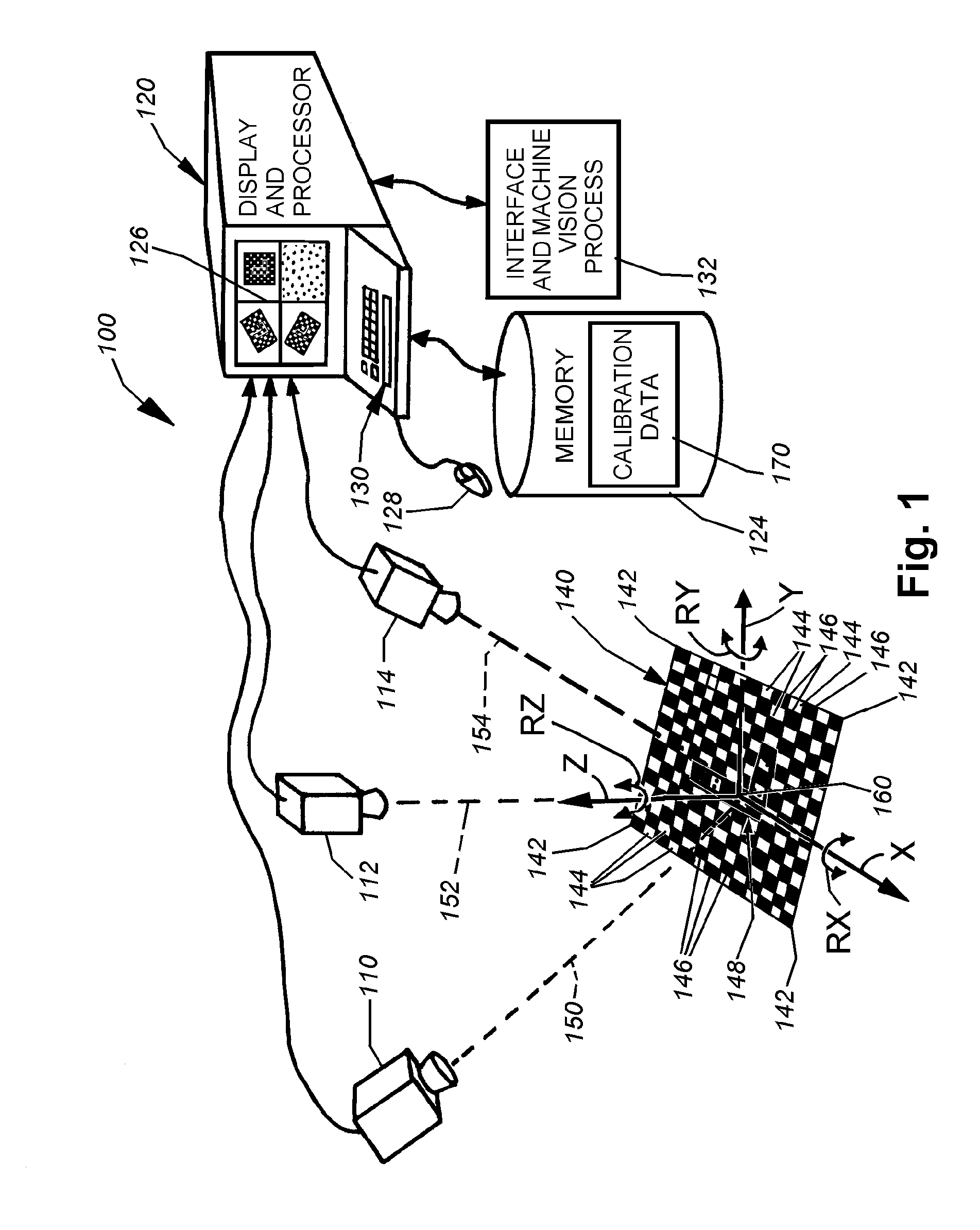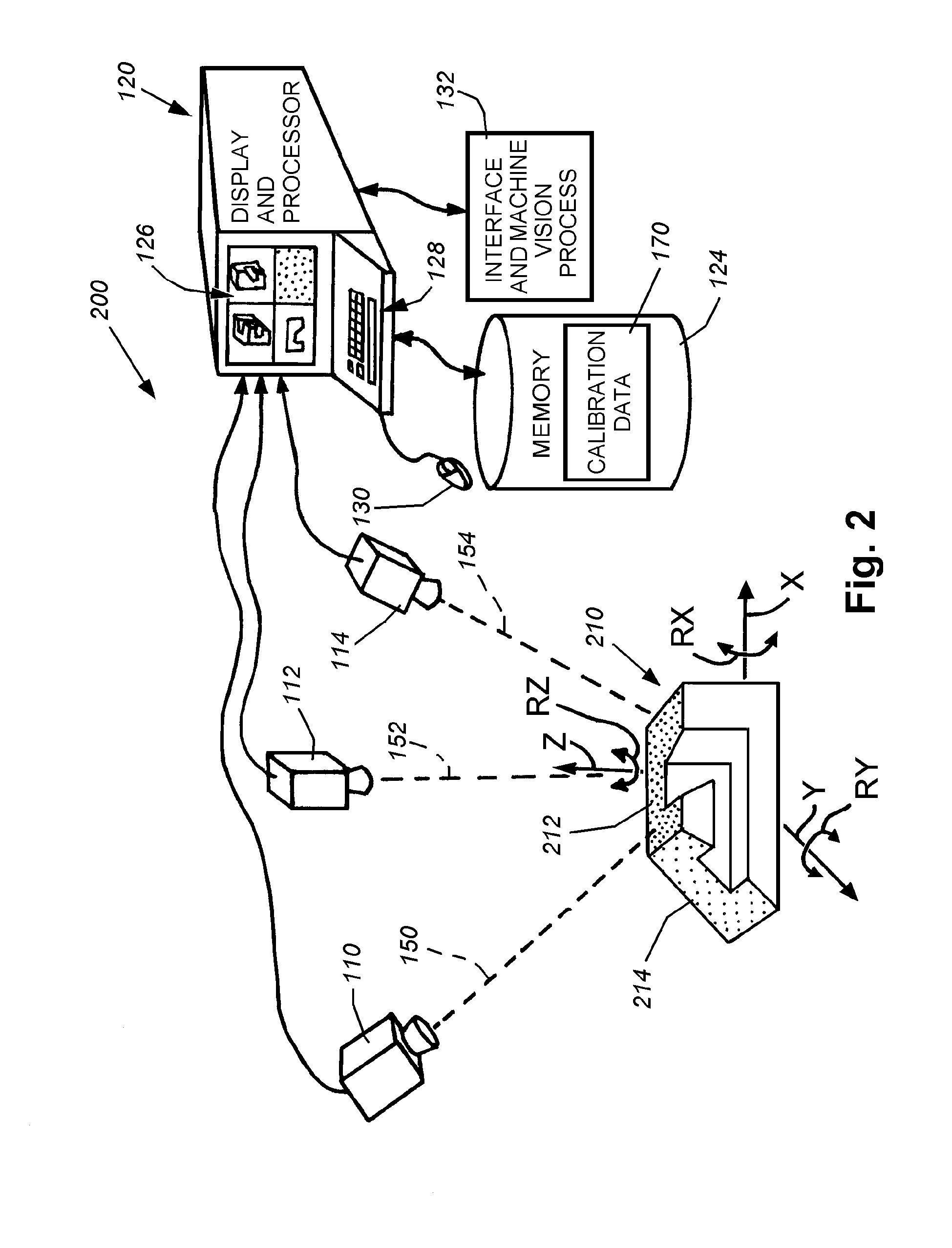System and method for locating a three-dimensional object using machine vision
a machine vision and object technology, applied in the field of machine vision systems, can solve the problem that the single affine transformation cannot be trusted to provide the registered pattern, and achieve the effect of minimizing the total error and minimizing the error
- Summary
- Abstract
- Description
- Claims
- Application Information
AI Technical Summary
Benefits of technology
Problems solved by technology
Method used
Image
Examples
Embodiment Construction
[0024]I. Calibration of the Cameras
[0025]FIG. 1 details an exemplary setup for a machine vision system 100 capable of registering objects in three dimensions (3D) using six degrees of freedom (three translational degrees and three rotational degrees). The system 100 includes a plurality of cameras 110, 112 and 114 in this embodiment that are each oriented to derive a different view of an underlying subject. The number of cameras and their positioning with respect to a subject is highly variable. In alternate embodiments, only two camera's can be employed, or even a single camera with a sufficiently wide field of view, and some inherent distortion (for example a camera equipped with a fish-eye lens) so that, either, at least two discrete poses of a subject can be derived from a single image (if no coarse pose estimate is supplied) or at least four features on the image occur along non-parallel rays (described below) from the camera (if a coarse pose estimate is supplied). For the pur...
PUM
 Login to View More
Login to View More Abstract
Description
Claims
Application Information
 Login to View More
Login to View More - R&D
- Intellectual Property
- Life Sciences
- Materials
- Tech Scout
- Unparalleled Data Quality
- Higher Quality Content
- 60% Fewer Hallucinations
Browse by: Latest US Patents, China's latest patents, Technical Efficacy Thesaurus, Application Domain, Technology Topic, Popular Technical Reports.
© 2025 PatSnap. All rights reserved.Legal|Privacy policy|Modern Slavery Act Transparency Statement|Sitemap|About US| Contact US: help@patsnap.com



